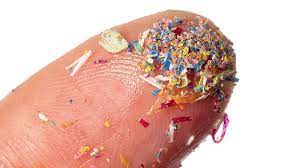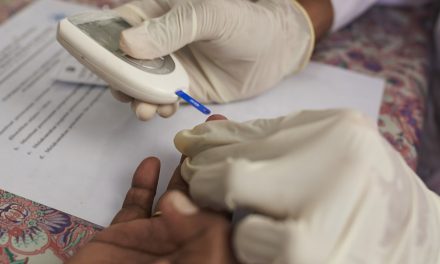In a groundbreaking study by Rutgers Health, researchers have made a startling discovery: aerosolized microplastics have been found in the organs of newborn rodents following in utero exposure. Published in the journal Science of the Total Environment, this revelation raises alarming concerns about the potential health impacts of plastic pollution on human infants.
Plastic pollution, including microscopic particles smaller than a grain of sand, has become a pervasive problem in the environment. These tiny particles, known as micro- and nanoplastics (MNPs), enter the environment through the degradation of consumer products and are easily absorbed into the human body through inhalation, skin absorption, and diet. Until now, researchers had understood that these pollutants could cross the placental barrier and reach fetal tissues. However, the long-term presence of these particles in neonatal tissues after birth remained unclear—until now.
The Rutgers Health study led by Phoebe A. Stapleton, associate professor of pharmacology and toxicology at the Rutgers Ernest Mario School of Pharmacy, sheds new light on this issue. “Nobody wants plastic in their liver,” said Stapleton, who is the senior author of the study. “Now that we know it’s there – as well as in other organs – the next step is to understand why and what that means.”
Research Findings in Rodents
To investigate whether micro- and nanoplastic particles persist in neonatal tissues after maternal exposure, Stapleton and her team exposed pregnant rats to aerosolized food-grade plastic powder for 10 days. This research used rodents because of the similarity in placental structure between humans and rats, where maternal and fetal blood don’t come into direct contact during circulation.
Two weeks after the rats gave birth, researchers tested the offspring for the presence of plastics. Their results were striking: plastic particles identical to those inhaled by the mothers were found in the lung, liver, kidney, heart, and brain tissues of the newborn rats. No such particles were found in the control group, highlighting the significance of in utero exposure.
Stapleton emphasized the broader implications of these findings, stating that the research provides critical evidence of the dangers posed by micro- and nanoplastics in the environment. “These results raise concerns for the toxicological impacts associated with MNPs exposure, maternal-fetal health, and systemic MNPs particle deposition,” she explained.
Potential Health Risks and Wider Environmental Concerns
Micro- and nanoplastics have become a ubiquitous pollutant, detected in food, farmland, seawater, and even snow. These invisible particles have been found in the deepest oceans and on the highest mountain peaks. Despite their widespread presence, little is known about their long-term impact on human health.
An increasing body of evidence suggests that exposure to microplastics may be linked to serious health issues, including cancer, inflammation, impaired immune function, tissue degeneration, and cardiovascular diseases. The Rutgers study adds to this growing concern, particularly when considering the vulnerability of developing fetuses to toxic exposure.
Call for Further Research and Policy Action
Stapleton hopes her research will spark a sense of urgency among policymakers to address the issue of plastic pollution more comprehensively. “Without answers, we can’t have policy change,” she stated, emphasizing the need for greater funding to investigate the health effects of MNP exposure.
As researchers continue to explore the health implications of microplastics, there is potential for regulatory frameworks that could help protect public health. Although plastic materials have revolutionized consumer products, Stapleton stressed that too little is known about the long-term health consequences of their widespread use. She believes that further research could lead to regulations that limit the use of the most harmful plastics.
“I don’t think we’ll ever get rid of plastics altogether,” she acknowledged. “They’re too important for modern life. But I do think we might get to a point where we’ll have some policies to indicate which ones are less toxic than others.”
The study’s findings underscore the urgent need for continued research and policy development to mitigate the potential risks posed by microplastics to both the environment and public health.
Reference: “Identification of micro- and nanoplastic particles in postnatal Sprague-Dawley rat offspring after maternal inhalation exposure throughout gestation” by Gina M. Moreno, Tanisha Brunson-Malone, Samantha Adams, Calla Nguyen, Talia N. Seymore, Chelsea M. Cary, Marianne Polunas, Michael J. Goedken, and Phoebe A. Stapleton, 6 August 2024, Science of The Total Environment. DOI: 10.1016/j.scitotenv.2024.175350











